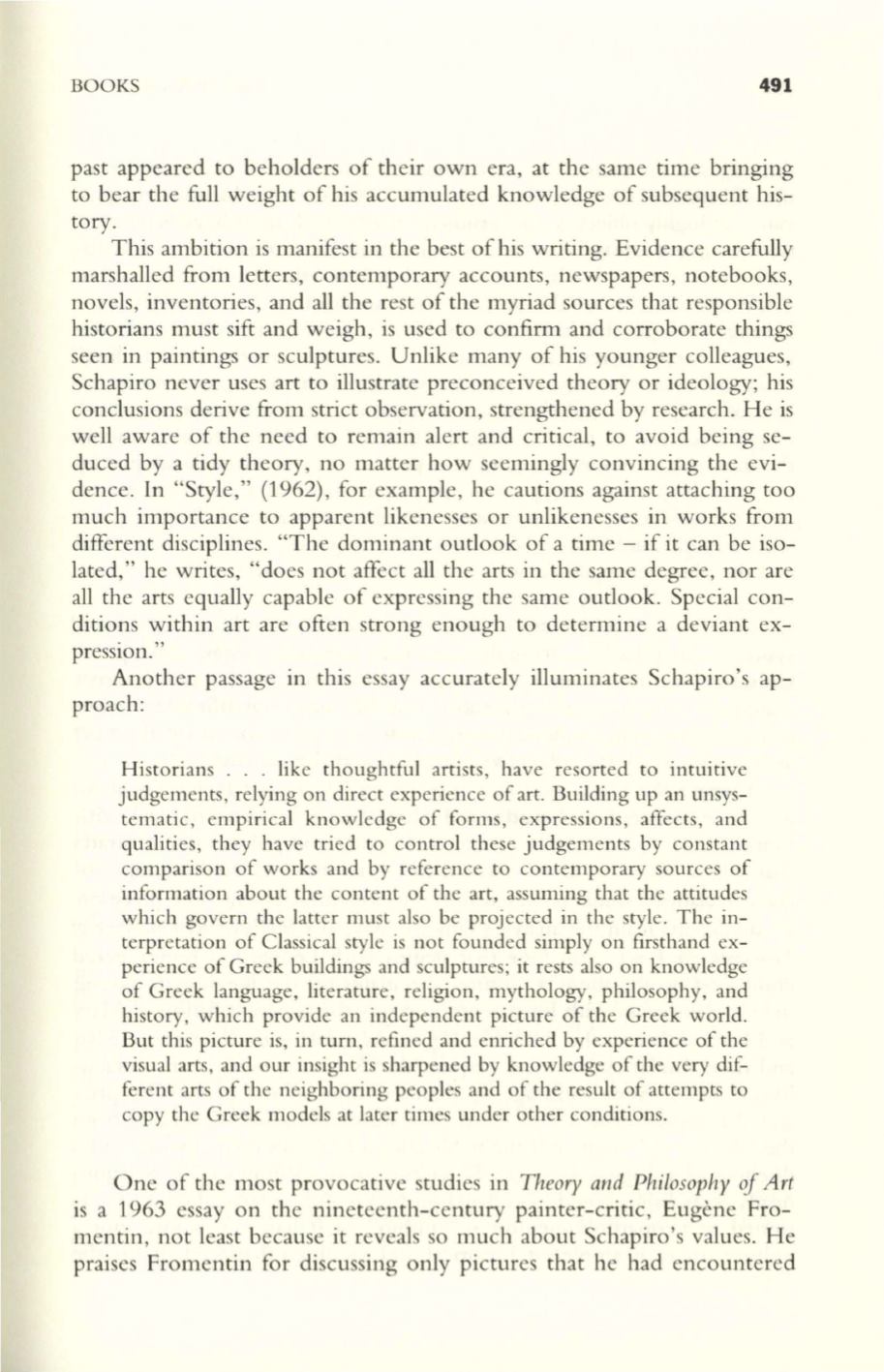
BOOKS
491
past appeared to beholders of their own era, at the same time bringing
to bear the fulJ weight of his accumulated knowledge of subsequent his–
tory.
This ambition is manifest in the best of his writing. Evidence carefully
marshalled from letters, contemporary accounts, newspapers, notebooks,
novels, inventories, and
all
the rest of the myriad sources that responsible
historians must sift and weigh, is used to confirm and corroborate things
seen in paintings or sculptures. Unlike many of his younger colJeagues,
Schapiro never uses art to ilJustrate preconceived theory or ideology; his
conclusions derive from strict observation, strengthened by research. He is
welJ aware of the need to remain alert and critical, to avoid being se–
duced by a tidy theory, no matter how seemingly convincing the evi–
dence. In "Style," (1962), for example, he cautions against attaching too
much importance to apparent likenesses or unlikenesses in works from
different disciplines. "The dominant outlook of a time - if it can be iso–
lated," he writes, "does not affect all the arts in the same degree, nor are
alJ the arts equally capable of expressing the same outlook. Special con–
ditions within art are often strong enough to determine a deviant ex–
pression."
Another passage in this essay accurately illuminates Schapiro's ap–
proach:
Historians ... like thoughtful artists, have resorted to intuitive
judgements, relying on direct experience of art. Building up an unsys–
tematic, empirical knowledge of forms, expressions, affects, and
qualities, they have tried to control these judgements by constant
comparison of works and by reference to contemporary sources of
information about the content of the art, assuming that the attitudes
which govern the latter must also be projected in the style. The in–
terpretation of Classical style is not founded simply on firsthand ex–
perience of Greek buildings and sculptures; it rests also on knowledge
of Greek language, literature, religion, mythology, philosophy, and
history, which provide an independent picture of the Greek world.
But this picture is, in turn, refined and enriched by experience of the
visual arts, and our insight is sharpened by knowledge of the very dif–
ferent arts of the neighboring peoples and of the result of attempts to
copy the Greek models at later times under other conditions.
One of the most provocative studies in
Theory and Philosophy oj Art
is a 1963 essay on the nineteenth-century painter-critic, Eugene Fro–
mentin, not least because it reveals so much about Schapiro's values. He
praises Fromentin for discussing only pictures that he had encountered


